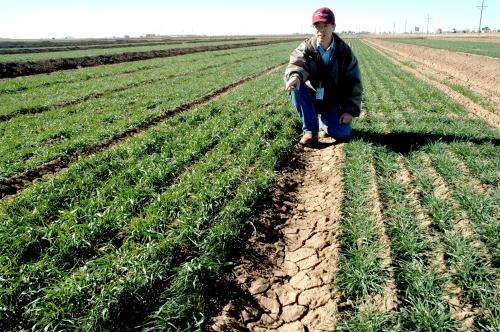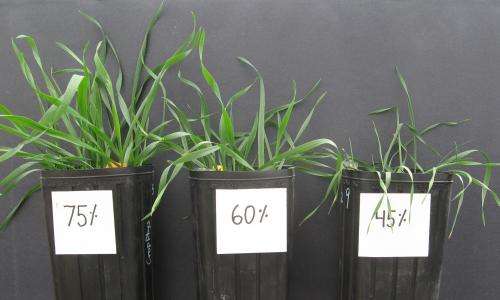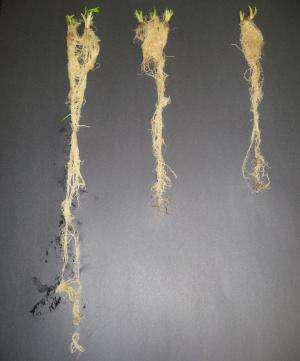Soil-water profile key to wheat root system, drought survivability

Without soil moisture, roots don't develop and grow. Without a strong root system, a crop cannot survive in a drought year, according to a Texas A&M AgriLife Research crop stress physiologist in Amarillo.
While most producers realize water is the most important limiting factor affecting wheat production in semi-arid areas such as the High Plains, Dr. Qingwu Xue said the past two years of drought have emphasized the key role of soil water availability at planting time.
"With the erratic seasonal rainfall, soil water storage – the water available in the soil at planting time – is very critical for a successful crop," Xue said. "A dryland farmer's first important decision must be to determine if there is sufficient soil water in the profile to plant."
This year is a prime example, he said. In late September, a 2-inch rain fell across much of the Panhandle and many wheat producers got excited.
"But if they didn't have an existing storage of water in the soil, that 2-inch rain is having a hard time carrying the crop to the next rainfall, which still hasn't come as of mid-December."

Long-term field research atBushland and in western Kansas demonstrated that wheat yields are closely tied to seasonal evapotranspiration, which is determined by soil water storage, seasonal rainfall and irrigation, Xue said.
"If you don't have a good soil-water profile at planting, and you are a dryland farmer, you may need to just not plant, or wait for more moisture," Xue said. "You may be better off letting the profile fill up for the next crop."
He said the difference between water storage during a three-month fallow period and an 11-month fallow period can be tremendous in a dry period.
Xue said if wheat producers were at the end of a longer fallow period and had the soil moisture, then the second part of the equation is how to effectively use the soil moisture. In this case, a healthy and strong root system plays an important role for water use also.

Many management tools can help wheat plants develop a good root system, such as planting date, seeding rates, row spacing, fertilization and variety selection, he said.
When selecting a variety, seedling vigor will be important, Xue said. His studies have shown that vigorous seedling growth not only led to good forage production but also to good root production – both necessary to take a crop to either grazing or grain harvest.
"We've found that if a variety is vigorous under a well-watered system, it is likely going to be vigorous under drought-stressed conditions," he said.
"So it doesn't matter if the producer wants to use his wheat for a dual purpose of grazing and grain or just grain, the vigorous seedling growth is necessary to get through dry periods."
Provided by Texas A&M University
















